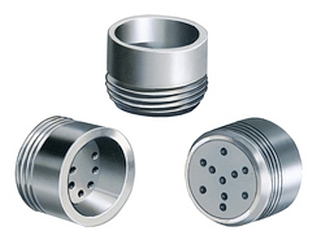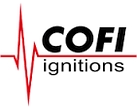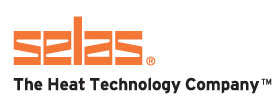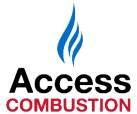Blast Tips

A blast tip handles combustion and air gases under pressure to create a blast
flame. The air-gas mixture may be from a pre-mix blower, inspirator or mixing
tee.
Blast tips are generally intended to be used in direct impingement applications, without a refactory tunnel. They are also self piloted or protected from being blown-out.
Because of the great differences in combustion characteristics of available gases, not all tips and gases are compatible. For example, a tip that works well on coke oven gas may completely fail if used with CNG.
Eclipse offers a product called "No Blow Blast Tips". These are specifically engineered to work properly in any type of gas. When using slow burning gas such as CNG or Propane, they resist the flame being blown off, while still preventing a backfire situation when burning coke oven or water gas.These fill the gap in the industry of a universal tip that need not be changed if the gas supply is altered. They certainly work best with an optimal air-gas mixture, but tolerate a wide and varied range of mixtures. They are compatible with enclosed chambers that do not provide secondary air so long as they not allowed to overheat. With secondary air, the capacity is nearly doubled. The standard tips are steel, but the alloy tips are available for the higher temperature applications.
Blast tips are applicable to a variety of processes including grouped to heat a large surface area like a kettle bottom. They might be installed along the length of a pipe in a core oven.
Small capacity, short length applications may use the tips screwed directly into the pipe. A reducing fitting may be used as well. If the application calls for it, the blast tips can be mounted at a 90@deg; angle.
Blast tips have the potential to overheat during operation, causing the combustion gases to also pre-heat. This increases the volume and therefore reduces the capacity. Overheated tips can also potentially cause a pre- ignition backfire that could damage the system. Alloy steel tips can mitigate these issues.
Most applications will require each tip to be lit individually, possibly with a manual torch. The exception is when a fast burning gas is used in a system with tips mounted very close to each other.
For your safety and the safety of the public, it is imperative that all fuel burning equipment is equipped with proper flame sensing devices and automatic shut off valves.
Thermal Equipment Systems, Inc. can help you determine the correct flame monitoring equipment for your application.
Blast tips are generally intended to be used in direct impingement applications, without a refactory tunnel. They are also self piloted or protected from being blown-out.
Because of the great differences in combustion characteristics of available gases, not all tips and gases are compatible. For example, a tip that works well on coke oven gas may completely fail if used with CNG.
Eclipse offers a product called "No Blow Blast Tips". These are specifically engineered to work properly in any type of gas. When using slow burning gas such as CNG or Propane, they resist the flame being blown off, while still preventing a backfire situation when burning coke oven or water gas.These fill the gap in the industry of a universal tip that need not be changed if the gas supply is altered. They certainly work best with an optimal air-gas mixture, but tolerate a wide and varied range of mixtures. They are compatible with enclosed chambers that do not provide secondary air so long as they not allowed to overheat. With secondary air, the capacity is nearly doubled. The standard tips are steel, but the alloy tips are available for the higher temperature applications.
Blast tips are applicable to a variety of processes including grouped to heat a large surface area like a kettle bottom. They might be installed along the length of a pipe in a core oven.
Small capacity, short length applications may use the tips screwed directly into the pipe. A reducing fitting may be used as well. If the application calls for it, the blast tips can be mounted at a 90@deg; angle.
Blast tips have the potential to overheat during operation, causing the combustion gases to also pre-heat. This increases the volume and therefore reduces the capacity. Overheated tips can also potentially cause a pre- ignition backfire that could damage the system. Alloy steel tips can mitigate these issues.
Most applications will require each tip to be lit individually, possibly with a manual torch. The exception is when a fast burning gas is used in a system with tips mounted very close to each other.
For your safety and the safety of the public, it is imperative that all fuel burning equipment is equipped with proper flame sensing devices and automatic shut off valves.
Thermal Equipment Systems, Inc. can help you determine the correct flame monitoring equipment for your application.


















